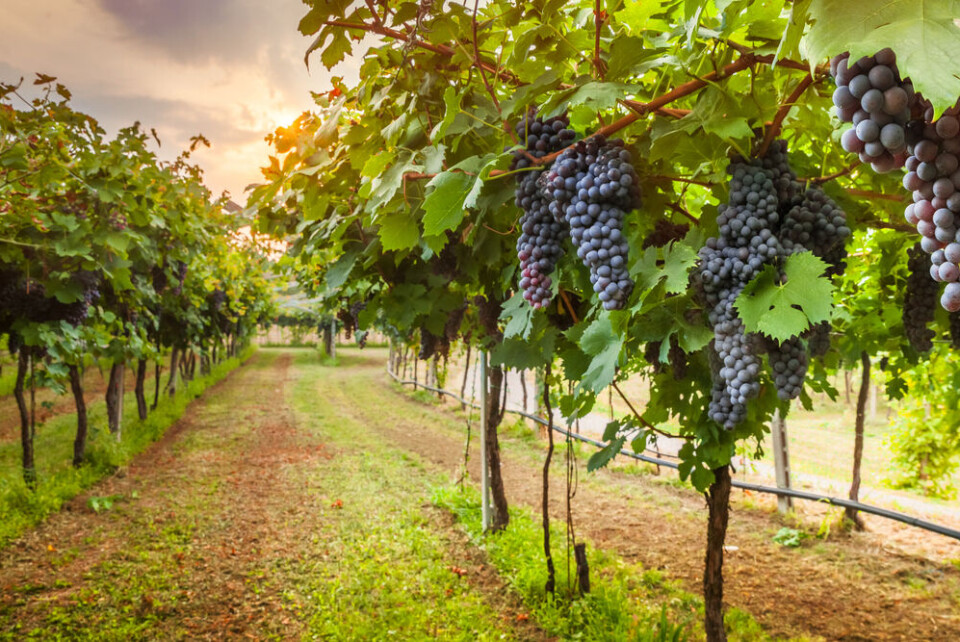-
The magic of mayonnaise: Why a homemade emulsion always woos guests in France
Plus, which shop-bought mayo brand is best?
-
Online ‘anti-waste’ supermarket offers deals on everyday items in France - we test it
Discounts of 10% to 50% available on brand products
-
Travellers to the UK from France cannot bring in meat and dairy items amid disease fears
Britons bringing gifts of saucissons and cheese to family among those impacted by restrictions
What you need to know before producing your own wine in France
Producing the grape-based beverage is a dream for many people. We look at the minimum requirements of managing a vineyard and why it is doable, but not easy

Plenty of people have a dream of owning a vineyard. Some buy properties that have some vines growing on them and fancy the idea of making their own wine or having wine made for them by a local winery. Although it is possible, almost everyone underestimates the amount of work required and the amount of machinery needed.
In this article I’d like to look at what is required, as a minimum, to manage a vineyard.
Let me start by saying that a single vine only produces about one bottle of wine per year. So you need a fair number of vines to make it worth the effort.
Starting in winter, the first job is pruning the vines. Although this can be achieved with just a decent pair of secateurs, it does require a certain level of knowledge. Pruning a vine badly will not only affect the quality of the fruit this year but make it harder in the years to come. Fortunately there are plenty of internet sites and books on the subject.
All those pruned shoots need to be dealt with otherwise they will impede other jobs. You can either gather and burn them or chop them up into little pieces. Doing either manually is painstaking. A tractor-drawn ramasseur (gatherer) or broyeur (mulcher) is much more efficient. Efficiency is important because at the same time, the weeds start to grow and these need to be dealt with fairly quickly. They can be hoed out by hand but that will take hours of work.
A simple alternative would be to spray weedkillers but these are being restricted, can harm the vines and don’t appeal to everyone. Working the soil or mowing the weeds is going to require some form of equipment, driven by either a tractor or a horse. A mini-tractor or quad-bike could be used for mowing but lacks the power to pull a plough, especially if the soil is compact or stony.
Read more:How winemakers in France are reducing pesticide use
Ploughing is a complex task. It’s taken me years to work out which types of plough to use, at which time of year and how deep to go on different soils. Ploughing has its own arcane language that can vary from region to region. Trying to explain to a French agricultural salesman what kind of plough you want has to rank among the most frustrating dialogues for a foreigner.
There are numerous types of blades or feet that can be attached to the plough-frame. Disks which cut up weeds and grass on soft soils, disk harrows which combine cutting with working the soil, solid metal blades of various shapes to cultivate the soil by breaking it up and turning it, rotavators driven from the tractor’s power-take-off, which pulverize both weeds and soil. Some small-scale vignerons make do with just a rotavator for all their soil management but they are not the best tools and likely to cause problems in the long-term.
The choice of plough blades is large and includes simple spikes, known as chisels, or the more substantial crescent moon blade known as côte de melon. Wider still are the nez de cochon blades which uproot weeds while turning the soil. Finally there are the shovel-style blades for moving soil onto the vine row in autumn and off again in spring. All can be used in combination.
A normal plough will only work the soil between the rows, not the spaces between the vines under the row. In order to do that you would need an “intercep” plough which retracts the outer blades using a mechanical or hydraulic system to avoid damaging the vine trunks. Otherwise it’s back to using the hoe or herbicides.
Read more:A guide to the winemaker’s calendar in France
Vines don’t need a lot of fertiliser in order to grow but certain nutrients do need to be added back to the vineyard, primarily nitrates and potassium. You could spread granulated chemical fertilisers by hand but applying an organic fertiliser, which required much larger volumes, is going to require some form of spreader, again towed by tractor.
Some fertiliser suppliers will lend these out but they are often old, damaged and only suited to certain widths of vineyard.
The vines grow quickly in summer and the shoots will soon start restricting the passage of the tractor or personnel. Having too much leafy-growth will also prevent fruit from ripening and harbour diseases. You can trim a low-vigour vineyard with garden shears but it’s time consuming and hard work if the vines are vigorous. A hedge-trimmer or tractor-mounted trimmer will make the job a lot easier.
Pest management is perhaps the most stressful of all vineyard tasks. I’ve written previously about the various pesticides required to keep the vine healthy. There is a misconception that organic viticulture doesn’t use pesticides but it does, it just doesn’t use synthetic chemicals.
Sulphur powder can be dusted on using a simple backpack bellow pump, but only on windless days. Liquid pesticides can be sprayed using a petrol-powered backpack but as the vines get bushy later in the season it becomes harder to make sure the sprays penetrate the leaves. A tractor-drawn sprayer is a lot more efficient. However, sprayers are complex and require careful adjustment and handling to apply the right dose precisely.
I’ve listed the bare minimum of equipment needed to run a vineyard. Commercial vineyards have a much higher level of automation, replacing many manual tasks with machinery to pre-prune the vines, raise and lower wires, manage the soil, trim shoots, remove leaves and harvest grapes. The image of the gnarly vigneron working the vines with his horse is one for the sales brochure.
Jonathan Hesford has a Postgraduate Diploma in Viticulture and Oenology from Lincoln University, New Zealand and is the owner, vigneron and winemaker of Domaine Treloar in the Roussillon.www.domainetreloar.com
Related stories:
How to read French wine labels - Château, Chablis and chardonnay
AOP or IGP, doux or liquoreux…How to interpret French wine labels
























